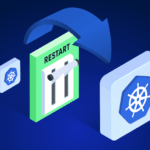
A Simple Guide for Shrinking Your Cloud Footprint

CEO and Co-founder
(This post was originally published on The New Stack)
If you’re like the majority of businesses working in the cloud, you know that making the most out of your cloud operations is easier said than done. You want your cloud to run efficiently so it can achieve more with less strain on your resources and fewer financial repercussions.
Instead, you’re plagued by a lack of accountability for cloud resources and usage, little visibility into your cloud spend, and a situation in which the cloud has become as lawless as the Wild West.
So how can you get back to basics and shrink your cloud footprint?
Here are some key strategies:
Get Visibility Into What You’re Using
Surprisingly, many organizations still have little visibility into their cloud usage, according to a report by Ixia. So while cloud visibility may sound like a given, it is not to be taken for granted.
Those who lack visibility may have little knowledge of the number of instances they’re spinning up, how many of them are on-demand versus a more cost efficient pricing model, or what percentage of their resources are idle or wasted. They also probably don’t know which teams or stakeholders are responsible for creating each instance or if their instances are properly right-sized to fit their workloads.
Without these insights, spending can get out of control fast as teams spin up more and more instances without thinking about cost optimization. So instead of waiting until you get your next bill and start wondering where all these expenses came from, it’s time to get proactive.
There are many tools native to the cloud that offer visibility into your cloud usage and potential spend. Examples include AWS Cost Explorer, AWS CloudTrail, Azure Cost Management, and Usage Reports for GCP. Of course, all of these tools are limited in their capabilities. They offer insights into what you are using, however, they don’t take the next steps to help you manage efficiency. This means it is up to the engineer to take the information provided and come up with viable solutions to shrink their cloud footprint.
In addition to monitoring, tagging your assets is also an essential part of gaining visibility into your cloud usage. Tags are metadata labels that can be attributed to various applications, teams or individuals. They help you track which instances belong to each product, feature and team. By tagging your assets, you enable engineers to take ownership of their applications and the resources they’re taking up in the cloud.
Allocate Responsibility and Define Processes
Now that you have visibility, it’s time to take control of your cloud costs by putting the right protocols in place – or in other words, establishing a cloud governance framework.
Essentially, cloud governance is a centralized and established game plan for cloud management that consists of best practices, programs, tooling, workflows, policies and standards. Putting together a governance strategy enables your organization to manage costs, efficiency and security of cloud resources. In addition, it will also help all cloud stakeholders to stay aligned and accountable for their applications. Overall, building a governance strategy will streamline your cloud management processes so you can ensure your cloud is performing at its optimal level.
FinOps, or financial operations, is another important practice to consider. FinOps’ core objective is to design cost efficient cloud operations. This is done by taking a holistic and proactive approach to planning and architecting a financially smarter cloud. Although both governance and FinOps are strategic frameworks, FinOps differs in its focus on financial cloud efficiency as opposed to general cloud management. Some best practices of FinOps include mapping your cloud usage, tagging assets, defining a cloud budget and establishing clear KPIs (such as RI & SP coverage, committed use discount coverage, rightsizing opportunity value, and more)
By putting both these processes in place, your organization will be able to maximize cloud efficiency and eliminate wasteful practices that increase your cloud footprint.
Implement Automation
Cloud management is full of repetitive and mundane tasks that are better suited for machines. So why are humans still handling them?
Even the smartest and most efficient engineers are not working 24/7 (they have to sleep and eat, after all) and cannot process billions of data points per second. As a result, they will be unable to instantly rightsize instances the second your demand decreases, take advantage of RIs and SPs that meet your real-time needs at any given moment, or continuously identify and eliminate idle resources.
Once you have visibility into your cloud as well as a mature FinOps and cloud governance strategy in place, the natural next step is to implement automation to take care of all the routine maintenance your cloud requires, but your engineers hate performing.
Doing so will ensure you never miss a beat, ensuring your governance and FinOps strategies are being optimized to their fullest.
Final Words
The cloud has revolutionized the way we conduct business and build technology. While we have a lot to thank the cloud for, more and more businesses are recognizing the financial and operational consequences of not managing and optimizing their cloud footprint.
By following the above best practices, you can take control of your cloud operations and build a strategy that will accelerate cloud efficiency for years to come.
Zesty’s autonomous cloud management solution can help you shrink your cloud footprint with zero effort on your end. Chat with one of our cloud experts to learn how!
Related Articles
-
How we cut Kubernetes costs by half at Wildflower
September 30, 2025 -
 Why it’s time to get off the manual Kubernetes optimization treadmill
Why it’s time to get off the manual Kubernetes optimization treadmill
August 14, 2025 -
 Zesty now supports In-Place Pod Resizing for Seamless, Real-Time Vertical Scaling
Zesty now supports In-Place Pod Resizing for Seamless, Real-Time Vertical Scaling
July 30, 2025 -
 The endless cycle of manual K8s cost optimization is costing you
The endless cycle of manual K8s cost optimization is costing you
July 2, 2025 -
 This is the #1 cloud budget killer (and it’s easier to fix than you think)
This is the #1 cloud budget killer (and it’s easier to fix than you think)
June 16, 2025



